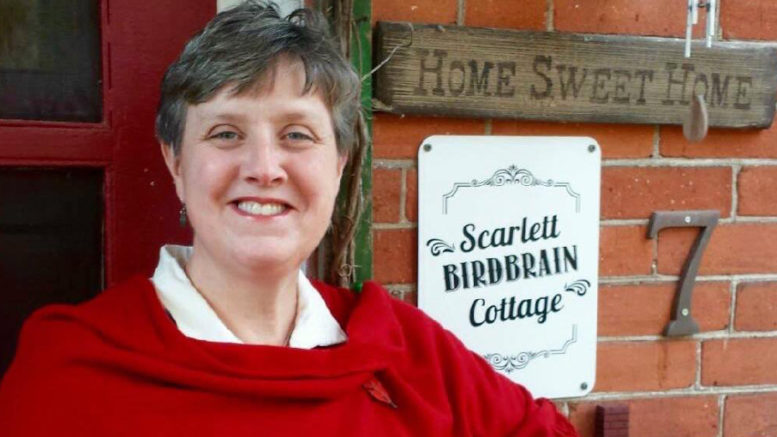Laurie Snider
Notes from the Nest
This past week the page in my agenda flipped over, giving a nod to a change in seasons. It announced that despite continuing cooler temperatures, spring has indeed arrived. The tiny green sprouts so desperately trying to poke their pointy little heads out above the soil, to catch a first whiff of spring are tempting me to get outside into the yard and gardens.
First things first however. Many ritualistic, yearly duties must be attended to inside before I give myself over to my gardens for the next several months. Like it or not, it’s time to throw open the windows, let the cool, fresh breezes filter out the stale remnants of winter, put some suds in the bucket and get down to some heavy-duty, spring cleaning.
Apparently, there are actual physiological reasons why we’re motivated to participate in a little earnest scouring at this particular time of year. According to Mother Nature Network, the lower light exposure during cloudier, shorter, lower-light winter days, triggers our Pineal gland in our brains to ramp up production of melatonin, our bodies’ natural sleep enhancer.
In spring longer, sunnier, brighter days cause melatonin production to decrease and we “wake up.” Our fresh set of eyes are more tuned in to noticing the build up of dust, dirt and detritus, inspiring us to pick up our brooms and get cracking!
Speaking of brooms, they were revolutionized by the Shakers in the late 18th Century. In 1798, Theodore Bates invented a method for making brooms flat. Prior to this they were round, which wasn’t terribly efficient for sweeping away the grit, which built up in all of those pesky little nooks and crannies.
Vacuum cleaners went through many iterations before ending up with the high-powered sucking devices that we’re so familiar with today. In the late 1800s John Thurman built a behemoth of a machine, that was so enormous it had to be moved around on a horse-drawn cart. It didn’t even suck air. It blew it.
In 1901, Cecil Booth of England improved upon the concept but with a few new ideas of his own. His own brainchild that he called the “Puffing Billy,” came about after he put his mouth over a handkerchief he’d placed on a restaurant chair and sucked on it. Astounded by how much dirt he’d obtained by this less than hygienic experiment, his innovation was born.
Unfortunately, his contraption was also huge and had to be lugged around via equine power. It was too big to fit inside buildings. Only the giant tubes attached to it were fed through the windows to inhale the grimy contents. Still, it’s services were used by Aristocrats and even to clean Westminster Abbey and Buckingham Palace.
Of course, today there’s a wide variety of state-of-the- art devices to choose from, ranging from canisters with bags, central vacuums or real forces to be reckoned with, dual-action cyclonics and even artificial intelligence robotics that zip around your home gobbling up soil, soot and cinders.
Many cultures are associated with spring cleaning rituals. Iranians carry out the practice of khooneh tekouni, which literally means “shaking the house.” This is performed in the weeks prior to Nowruz, the Iranian New Year.
During the Jewish holiday of Passover, Jewish people abstain from eating any leavened foods (chametz), as a reminder of their ancestors fleeing from slavery. They fled so quickly they couldn’t wait for their yeast bread to rise. Observant Jews celebrate by a thorough spring cleaning followed by a candlelight hunt for crumbs of chametz, the evening before Passover begins. Catholics and Anglicans strip and clean their altars on the evening of Maundy Thursday before Easter.
Europeans and North Americans were more pragmatic in their reasoning for a little swabbing and sponging, at this time of year. Their homes were heated with coal and lit with kerosene lanterns. March and April were the perfect time to open the windows, without worrying about insects, so the smoky residue could be scrubbed from inside their homes.
All manner of cleaning supplies is available to help us scour and sanitize our homes but I prefer the green ones. A little baking soda, vinegar, lemon and a healthy dose of elbow grease can pack a potent punch. Less chemicals in our homes are healthier for us, our pets and the environment.
Yesterday while out on an errand to gather supplies for polishing, and purifying our home, I spied an enormous furry mound out in the middle of a corn field. Turns out it was a beaver. It had gathered a snoutful of grass and mud and was waddling back towards its dam homestead. Evidently, humans aren’t the only ones inclined to do a little sprucing up in the spring.

